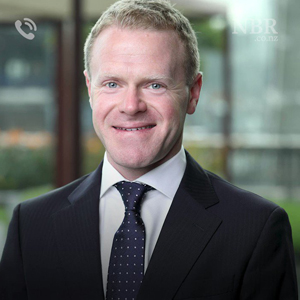Passive ESG funds get going, with a long runway – Morningstar
While most ESG strategies across the range of institutional, wholesale and retail investors remain active, over the past three years that has been rapid growth in passive ESG-influenced funds, both in their number and assets, according to Morningstar. Europe remains the biggest such market but the US, historically slow to adopt ESG funds, has grown at twice the pace. For the rest of the world, Australia is second only to China in assets. New Zealand is sixth.
In its 44-page report Morningstar identifies 534 index-tracking – passive – sustainable or ESG-influenced funds out of a total universe of 3,432 sustainable funds around the world. But there appear to be plenty of “runway” left for passive ESG funds. For instance, passive ESG funds make up only 12 per cent of all ESG funds, while passive funds in general make up 24 per cent of the overall market.
The 17 Australian passive sustainable funds totalled US$3.6 billion in assets as of June, following a surge in 2018 and a quieter year in 2019. Examining the most recent entrants to the list, Vanguard launched an ETF and an unlisted fund each in the equity and fixed-income segments during 2018, while VanEck came out with a sustainable equity ETF in the same year.
With nine offerings for investors, Vanguard is by far the largest provider of Australian passive sustainable funds with a market share of 65 per cent. These nine are all in the ‘exclusion-only’ category. The remaining eight offerings all belong to the ‘Broad ESG group’ − three funds provided by BetaShares, two by VanEck, and one fund each by BlackRock (iShares), Russell, and State Street.
The 534 sustainable passive funds represent US$250 billion in assets, with both their number and the assets under management doubling over the past three years since the last survey. Europe accounts for more than 75 per cent of the assets and the US, 20 per cent.
While New Zealand is ranked sixth in the world ex-Europe and the US for passive ESG-style funds, it has only one provider, SmartShares, which entered the space in 2017. It has US$99 million in sustainable assets at the end of June. In 2019, the manager launched five new ETFs for sustainable investing, which use an exclusion-only process.
Tim Murphy, Morningstar’s director of manager research for Asia Pacific, said the research house had dedicated a lot of resources to ESG over recent years. It had become a shareholder in Sustainalytics, a global data provider, which had been feeding Morningstar’s ESG ratings since 2016, and bought the rest of the firm just recently. One of the complexities in studying ESG is the broad range of what people consider should be included in the definition. “That spectrum creates a lot of choice and lots of work for asset owners and consultants like us,” he said. “There is really no one answer to it. Different people have different values.”
Record launches saw the global menu swell. The total number of sustainable passive funds available to investors globally more than tripled over the trailing five years to the end of June 2020. New fund launches reached a record 98 over 2019, and with 84 new entrants in the first half of 2020, this is likely to be eclipsed again. But the vast majority remain equity funds. Fixed income remains under cultivated. For all the growth in global assets, the development of the passive sustainable fixed-income space remains at an embryonic stage, particularly outside of Europe. Fees tend to be higher for passive ESG funds in most markets. But the report predicts that, should global inflows continue to rise, “we will be sure to see increased price competition as providers vie for assets”.
The age-old passive-versus-active debate is probably more acute when it concerns ESG. Two reasons for this is that it is not easy to differentiate between the various indices covering the space. Most the funds identified in the report are “exclusion only”, or use only negative screens, whereas most active managers have positive screens too. Some active managers go further and add an element of “impact investing” into their mix. Furthermore, the trend for active managers with either an integrated approach across portfolios or separate ESG strategies or funds is to actively engage with the companies they are analysing or already invest in (see separate report on Martin Currie this edition).
Morningstar says: The opacity of some ESG metrics can mean the true reasons for inclusion or exclusion are still tricky to ascertain. Some believe that, in its purest form, sustainable investment is only implementable by active managers. In some ways, the rigid nature of passive investing does not lend itself to the nuanced world of ESG. For example, liquidity constraints mean that passive strategies must steer clear of smaller, often more impactful, companies. Those seeking the most ESG impact might expect a level of engagement between fund management and portfolio company not possible in a passive wrapper.”
Murphy said that some asset owners might choose to have a systematic process but also an investment committee to oversee it and perhaps add a subjective input. But the opacity and complexities were not holding back the sector’s growth, he said.
– G.B.











